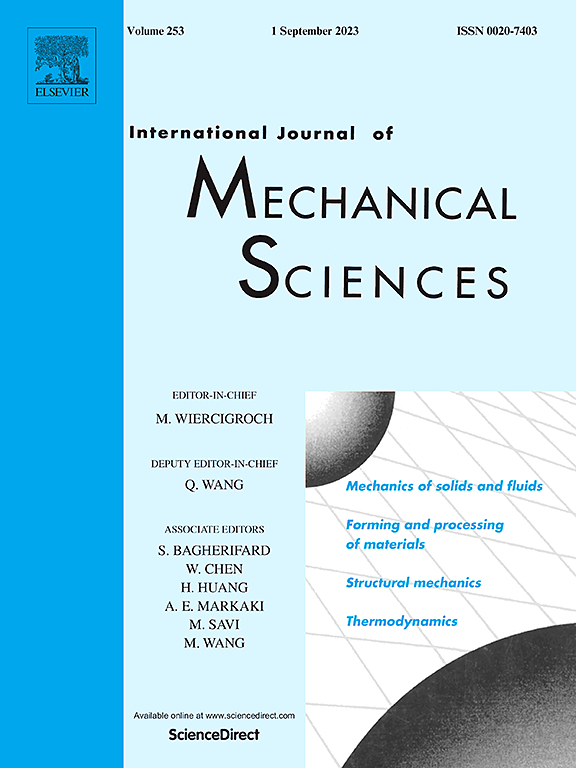Characteristics of multiple cavitations near plate structures in underwater explosions
IF 7.1
1区 工程技术
Q1 ENGINEERING, MECHANICAL
International Journal of Mechanical Sciences
Pub Date : 2025-02-08
DOI:10.1016/j.ijmecsci.2025.110047
引用次数: 0
Abstract
Multiple cavitations generated by near-field underwater explosions can cause significant structural damage, and its generation mechanisms and evolutionary characteristics are still unclear. Therefore, the characteristics of multiple cavitations near plates in underwater explosions are investigated experimentally and numerically. Multiple cavitations near air-backed plates with varying impedances are explored experimentally through a cavitation apparatus, and the effectiveness of Arbitrary Lagrangian–Eulerian method considering multiple cavitations in underwater explosions is validated by the experimental results. Based on the numerical method, the generation processes and evolutionary characteristics of multiple cavitations near air-backed plates at different detonation distances and near water-backed plates with different impedances are analyzed, where the influences of the explosion shock wave and bubble dynamics on evolutionary characteristics of multiple cavitations are commendably elucidated. On the basis of the liquid pressure and structural velocity, the generation mechanisms of multiple cavitations near the structure have also been well revealed. The results indicate that: Ⅰ. The first cavitation is mainly caused by rarefaction wave reflections or transmissions from the structure, which collapses quickly. The second cavitation is driven by negative pressure from liquid stretching due to structural oscillations, which collapses more slowly. Ⅱ. For air-backed plates, decreasing structural impedance increases the first cavitation diameter and delays second cavitation. Smaller detonation distances result in larger diameters and longer durations for cavitations. Ⅲ. For water-backed plates, when impedance is lower than water, cavitation diameters and durations increase as impedance decreases. However, when impedance exceeds water's, cavitation generation becomes difficult. Ⅳ. The third cavitation follows similar generation and evolution patterns as the second. These findings provide theoretical and technical support for revealing the complex mechanical mechanisms in near-field underwater explosions.

求助全文
约1分钟内获得全文
求助全文
来源期刊

International Journal of Mechanical Sciences
工程技术-工程:机械
CiteScore
12.80
自引率
17.80%
发文量
769
审稿时长
19 days
期刊介绍:
The International Journal of Mechanical Sciences (IJMS) serves as a global platform for the publication and dissemination of original research that contributes to a deeper scientific understanding of the fundamental disciplines within mechanical, civil, and material engineering.
The primary focus of IJMS is to showcase innovative and ground-breaking work that utilizes analytical and computational modeling techniques, such as Finite Element Method (FEM), Boundary Element Method (BEM), and mesh-free methods, among others. These modeling methods are applied to diverse fields including rigid-body mechanics (e.g., dynamics, vibration, stability), structural mechanics, metal forming, advanced materials (e.g., metals, composites, cellular, smart) behavior and applications, impact mechanics, strain localization, and other nonlinear effects (e.g., large deflections, plasticity, fracture).
Additionally, IJMS covers the realms of fluid mechanics (both external and internal flows), tribology, thermodynamics, and materials processing. These subjects collectively form the core of the journal's content.
In summary, IJMS provides a prestigious platform for researchers to present their original contributions, shedding light on analytical and computational modeling methods in various areas of mechanical engineering, as well as exploring the behavior and application of advanced materials, fluid mechanics, thermodynamics, and materials processing.
 求助内容:
求助内容: 应助结果提醒方式:
应助结果提醒方式:


